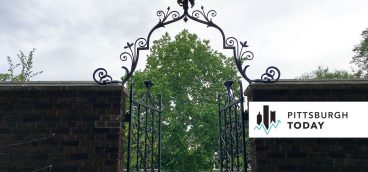State’s Innovation Economy Needs a Boost to Compete

Southwestern Pennsylvania’s innovation economy, bolstered by its major research universities, is brimming with potential. But the region and Pennsylvania has its work cut out for them if they want to compete with the likes of San Francisco, Boston and emerging stars, such as Austin, Texas.
And realizing that potential begins with a statewide plan and more robust investment from Harrisburg, according to a report released this week by the Metropolitan Policy Program at Brookings.
The report, “Ideas for Pennsylvania’s Innovation Policy,” points out that the nation’s innovation economy is centered on a small set of metropolitan areas, such as Boston, Seattle, San Francisco and New York.
“One of the things that sets apart the superstar metros is that at some point, they have had an alignment of really solid federal and state support combined with a local and regional vision of what they want to build out,” said Robert Maxim, research associate at the Metropolitan Policy Program at Brookings and a co-author of the report.
Pennsylvania had historically been a national leader in innovation policy with initiatives such as the 36-year-old Ben Franklin Technology Partners, which supports technology-focused start-ups across the state. But the state’s standing has slipped in recent years, Maxim said. “The consensus around innovation has broken down. The resources still exist, but are being underfunded or have been nearly zeroed out. From our point of view, it has limited the growth of some of the high performing areas, like Pittsburgh.”
To be competitive in the tech-driven economy, the authors of the report argue, Pennsylvania should focus on establishing a statewide innovation plan, increasing business research and development, creating state investment in the early stages of business financing, and on connecting regions throughout the state, so prosperity generated by the innovation industry doesn’t only land in Pittsburgh or Philadelphia.
What others are doing
Other states have responded with several initiatives to address the growing pains their innovation economies have experienced. New Jersey’s 2018 state economic plan, for example, emphasizes growing the science, technology, engineering and mathematics (STEM) workforce training programs and increasing public investment capital. Maryland helps fuel its industry with the Maryland Technology Development Corporation and the Maryland Venture fund, a state-funded group of early stage financing programs and a state-supported venture fund aimed at growing technology companies.
Another example is Colorado’s Advanced Industries Accelerator. The initiative funds companies in advanced industries at various stages of development, from research with commercial applications to startups and existing companies looking to expand.
Advanced industries, such as the aerospace industry, are characterized by their reliance on intensive research and development and high rates of STEM employment. Advanced industries also have long supply chains stretching from material science research to manufacturing and information systems. “The chain for economic benefits is long in advanced industries,” said Maxim. “If you’re looking for a good place to invest state resources and want broader impact throughout the state, advanced industries are a great place to focus on.”
The state of Colorado provided an initial investment of $5 million from the state’s general fund to start the accelerator. The program is now self-funded, largely relying on a small portion of future corporate income tax growth from the industries it serves.
In its first five years, the Colorado accelerator issued about $50 million in grants, spurred an additional $360 million in investments and supported 1,633 jobs in advanced industries in the state, according to the Brookings report.
A similar program would be possible in Pennsylvania, according to Maxim. “It’s a perfect program that could be built on the back of the Ben Franklin Technology Partners. If they could receive a bit more funding, there’s no reason that they couldn’t manage it.”
The will to invest
Incremental initiatives with long-term investments, such as Colorado’s Advanced Industries Accelerator, require political will in the state to succeed. And times of economic health offer a window for such investment, Maxim said. “If you’re going to invest in a program and potentially leverage a revenue source, now is the time to do it, at the peak of the economic cycle. Maxim These are the types of industries that make regions more impervious to downturns moving forward. If the state really wanted to, they could establish one of these programs tomorrow.”
The most influential economic development group in southwestern Pennsylvania agrees that more needs to be done to support the growth of an innovation industry that is seen as an anchor of the region’s economic future. “We are experiencing success, and with an even more competitive operating environment, we can go further, faster,” said Stefani Pashman, chief executive office of the Allegheny Conference on Community Development.
“As Brookings highlights in its report, Pennsylvania could use additional strategies and tools to propel the statewide economy into the future. We stand ready to work with our public, private and nonprofit partners to make the Pittsburgh region and the entire commonwealth an innovation leader, both domestically and globally.”
The Pittsburgh region is strong in research and academic resources, which brightens its prospects for long-term competitiveness, according to a new report by Aretian, a research group at Harvard University’s Innovation Lab that studies what drives economic prosperity. But transferring those ideas from the lab to production and market remains exceptionally weak compared to other U.S. innovation districts. In other words, the report found that Pittsburgh creates value, but fails to capture it locally.
“Right now, Pittsburgh and Philadelphia are testing out the limits of what regions can do on their own without state backing,” said Brookings’ Maxim. “It’s a positive story. They’re doing well. But, they haven’t really cracked that next level of a superstar global city. One of the necessary conditions is having a supportive state environment when it comes to innovation.”





